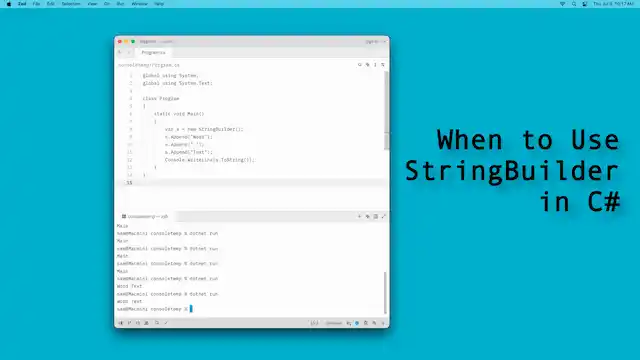When to Use StringBuilder in C#
It is common to need to append one string to another in C# programs. This is called concatenation. In languages where strings can be modified after being created, this is efficient—but in C#, strings are immutable and concatenation leads to a new string creation.

Creating too many new strings will cause excessive allocations and copying of memory. This can lead to big performance problems. StringBuilder can eliminate this problem by providing a buffer into which all the strings are copied, with fewer allocations.
We can use StringBuilder when:
string from many existing strings.In the case of two strings, it can be faster just to concatenate the strings directly, but it is also acceptable to use StringBuilder. If further appends are needed, the StringBuilder will prevent future performance problems. So it is useful as a preventative measure against excess string copies.